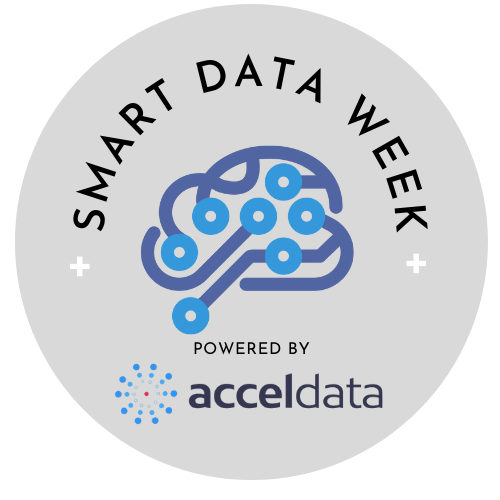Data pipeline management is never easy. Earlier, data from different sources went into separate silos that couldn’t be viewed, interpreted or analysed in transit.
In addition, data was nowhere near real-time. Now, as the number of data sources increases, the speed at which it transits enterprises and entire industries is faster than ever, and often, data pipelines aren’t designed to handle it. So data ingestion fails, resulting in long and painful troubleshooting.
ever, and often, data pipelines aren’t designed to handle it. So data ingestion fails, resulting in long and painful troubleshooting.
Data pipelines are automated workflows that extract data from multiple sources; each pipeline is a series of steps for processing data. These steps in which each action produces an output that becomes the next step’s input. The process continues until the pipeline is complete. A data pipeline consists of three key elements: a source, a processing step and a destination. Data pipelines enable data to flow from an application to a data warehouse or from a data lake to an analytics database.
Organisations are building applications with smaller code bases for particular functions, which means data is being moved between more and more applications, making data pipelines critical during application planning and development. Data generated by one source system or application may feed into multiple data pipelines, and those pipelines may have multiple downstream pipelines or applications that depend on their outputs.
Let’s understand it this way: a single comment from a social media outlet, which can even offer data for a real-time report during social media mentions, a sentiment analysis tool that reports positive, negative or neutral results or a world map of each comment. Despite the data being the same in all cases, each of these applications is built on different data pipelines that must work smoothly before the end-user can see the results.
Typical steps in a data pipeline include data transformation, augmentation, enrichment, filtering, grouping, aggregation, and the application of algorithms.
Traditionally, analytics data was stored in ACID (atomic, consistent, isolated and durable)- compliant databases on commodity hardware. It worked up until you needed to scale your hardware, and the available analytics and visualisation tools no longer provided analysts with the information they needed. In addition, analysts had to handle infrastructure maintenance and growth-related chores like sharding and replication without factoring in periodic software and hardware failures.
Now, how an organisation hosts and stores its data is crucial to its data analytics goals. The most common requirements for a data pipeline are connectivity, elasticity, schema flexibility, data mobility, transformation, and visualisation.
Also Read: How MLaaS Impacts Businesses
-
Putting data at the right place
It’s crucial to get a complete picture of data and put it in the right place. Organisations need to connect their tools to as many data stores and formats as possible, including unstructured data. However, it’s challenging to decide what to use and combine, transform, and ingest that data.
-
Hosting the data
To host your data, you’ll need a format that is widely recognised. You could take on the initial outlay, maintenance costs and staff for an on-premises solution. However, if you decide to self-host, consider the operating system and how much memory and disk space you need, performance considerations and latency requirements. Using a managed service works well. Many vendors provide fully-hosted and managed cloud databases and messaging services on all major cloud providers in all regions.
Also Read: Security Is A Big Data Problem
-
Data flexibility
Pipelines built around extract, transform, load (ETL) processes often pose unique challenges for businesses. A defect in one step of an ETL process can lead to hours of intervention, affecting data quality, eroding consumer confidence, and making maintenance difficult.
With data sources and events changing all the time, flexible schemas are needed for data analytics. Analytics data pipes must be elastic enough to cater to a wide range of data types and schemas. Traditionally, ACID databases were housed in on-premise commodity hardware and were translated between data stores using standard ETL tools. Analytics data is different; it is analysed in mass to identify more significant trends. As your source applications and systems evolve, you need to accommodate high-velocity, variable-length events: a schemaless model.
-
Data scaling
Sometimes analysts import data in isolated, all or nothing atomic batches. However, the volume and velocity of data and the need for real-time insights make this approach ineffective. Data storage must be scalable automatically for analysts. Today, you may receive an application, enterprise, or infrastructure analytics data from one device, system, or set of sensors, but tomorrow, there may be a million.
Your on-premises hardware and data store will limit you, so sharding and replication will be necessary. To scale your data as it grows, you need a managed system.
-
Data migration
The way your data is used will determine how it must be transferred. Most enterprises run batch jobs nightly to take advantage of non-peak time compute resources. Because your data is from yesterday, you can’t make real-time decisions based on it.
Apache Kafka tends to be preferred among pub-sub messaging architectures in large-scale data ingestion because it partitions data so that producers, brokers, and consumers can scale incrementally as load and throughput grow.
Conclusion
Data pipelines are like the backbone of digital systems. They move, transform, and store data and enable organisations to harness critical insights. But data pipelines need to be modernised to keep up with the growing complexity and size of datasets. And while the modernisation process takes time and effort, efficient and modern data pipelines will allow teams to make better and faster decisions and gain a competitive edge.









